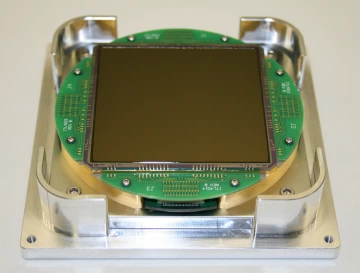DESI Publishes Largest 3D Map of the Universe Yet
15 million galaxies and counting

DESI imaging sensor produced by ITL attached to its storage container baseplate.
ITL has produced and delivered over 20 packaged sensors for the Dark Energy Spectrographic Instrument (DESI). These sensors have been used to characterize how large scale structures of our universe evolve over time. Recently, a new analysis using DESI provides evidence that the influence of dark energy may be weakening as the time moves forward and the universe expands.
As one of the most extensive surveys of the cosmos ever conducted, DESI captures light from 5,000 galaxies simultaneously and has observed over 18 million objects so far. The instrument is mounted on the U.S. National Science Foundation’s Nicholas U. Mayall 4-meter Telescope at Kitt Peak National Observatory, an hour's drive southwest of Tucson, AZ. The experiment is now in its fourth year surveying the sky, with plans to measure roughly 50 million galaxies and quasars.
DESI is able to measure how dark energy influences the universe by studying the distribution of matter. When the universe was in its infancy, subtle patterns in the primordial plasma became baked into the matter distribution, a feature called baryon acoustic oscillations (BAO). Researchers are able to use this BAO pattern as a standard ruler throughout the expansion of the universe and deduce the strength of dark matter throughout history. That BAO pattern acts as a standard ruler, with its size at different times directly affected by how the universe was expanding. DESI provides unprecedented precision with this approach.

